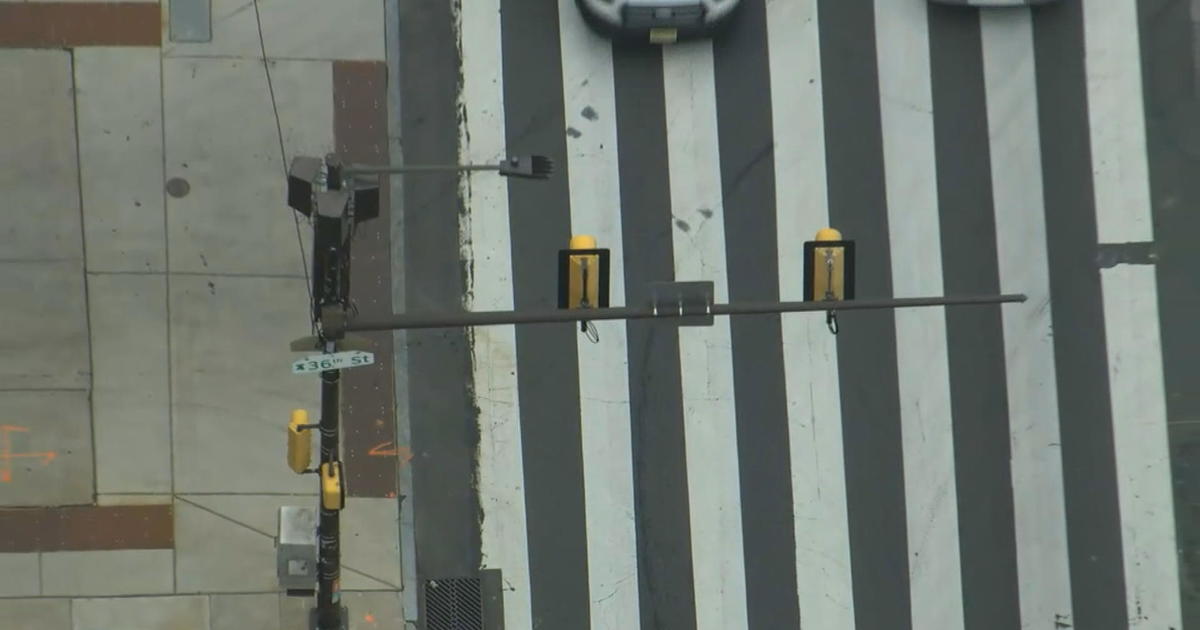Paulsboro Evacuations Extended After Train Derailment; School District Closed Monday
PAULSBORO, N.J. (CBS/AP) — More than 100 southern New Jersey residents will be kept out of their homes for several more days as crews work to clear a hazardous gas that spewed from a ruptured freight train car.
Noting that the hazardous material is still in the area, officials said Sunday that the Paulsboro, N.J. residents won't be able to return to their homes in the 12-block evacuation zone until at least Saturday.
Officials hoped to start removing the hazardous material, vinyl chloride, from the ruptured tanker sometime Sunday. It was not clear how long that would take to complete.
Officials decided Monday morning to close all Paulsboro School District schools.
And, the Paulsboro Head Start Center is closed through Friday.
All Guardian Angels Regional School students currently in the Paulsboro campus are being asked to report to the Gibbstown campus for the remainder of the week.
The Gateway Communication Center, including the day care center will be closed for the week.
Municipal Courts will be cancelled on Monday.
For community assistance information, call 1-800-230-7049.
The derailment Friday sent dozens of people to a hospital, but no serious injuries have been reported.
Federal investigators said Sunday that Conrail crews had studied reported signal problems at the railroad bridge where the derailment occurred.
The National Transportation Safety Board cannot examine the scene until the chemicals are removed. But the agency has begun reviewing records with a focus on both the signal problems reported recently and a 2009 train derailment on the same bridge.
Conrail regularly moves tons of hazardous material over the low bridge, which was originally built in 1873. The bridge straddles Mantua Creek, a tributary near the Delaware River in the industrial town of Paulsboro. The bridge operates like a garden fence, with a section that swings sideways to open for boat traffic, then closes and locks into place for freight trains.
The NTSB expects to focus its probe on that locking mechanism along with the signal devices, which are triggered by sensors on the bridge, not by dispatchers.
"This is a very complex (bridge) operation," Hersman said at a news conference Sunday. "There is a lot of tonnage that goes over this bridge and a lot of hazardous materials."
Conrail crews in recent days and weeks had been reporting problems with the signal, and the rail company had been looking into the problem only the day before, she said.
The veteran two-person crew was familiar with the route and had run it on the three previous nights. They had started their shift at 3 a.m. Friday and were surprised to get a yellow signal when they approached the bridge at about 7 a.m. They used a keypad device, similar to a garage door opener, to try to get a green light, but were unsuccessful. The pair stopped the train for several minutes, examined the tracks, and then got permission from a dispatcher to proceed, Hersman said.
The two locomotives and five cars made it across before the crew looked back to see the bridge "collapse" and a pileup of cars in the creek. The one that ruptured had been damaged by another tanker, Hersman said.
Recordings of various data so far support the crew's account, investigators said. However, authorities are not yet sure whether the bridge deck actually collapsed or shifted.
A team of NTSB investigators arrived in the region Saturday with scanners and other equipment to study the wreckage site, but they cannot get to the scene until the vinyl chloride is removed. The Coast Guard and other authorities were coordinating the cleanup.
The NTSB also plans to review how the bridge was rebuilt after the coal train derailed there in 2009.
Investigators also want to learn if the tidal surge or debris from Superstorm Sandy may have caused problems at the bridge, although the area was not among those hardest hit by the storm.
About 100 people are staying in motels due to the 12-block evacuation, while an unknown number are with friends and family, said state Assemblyman John Burzichelli, a former mayor of Paulsboro.
The bridge usually supports at least three major trains each day serving refineries and other customers in the area. The August 2009 derailment was believed to have been caused by a bridge misalignment.
The tanker that ruptured Friday contained 25,000 gallons of vinyl chloride, some of which spewed into the air, sickening dozens of people. About 70 people went to a nearby hospital complaining of respiratory problems and eye irritation. None of the injuries was believed to be serious.
The remaining gas in the tanker had turned into a solid and settled at the bottom of the tanker.
The removal of the vinyl chloride and the seven wrecked rail cars is expected to be a delicate operation. A huge crane was brought in from New York Harbor to pick up the tanker cars.
(TM and © Copyright 2012 CBS Radio Inc. and its relevant subsidiaries. CBS RADIO and EYE Logo TM and Copyright 2011 CBS Broadcasting Inc. Used under license. All Rights Reserved. This material may not be published, broadcast, rewritten or redistributed. The Associated Press contributed to this report.)



